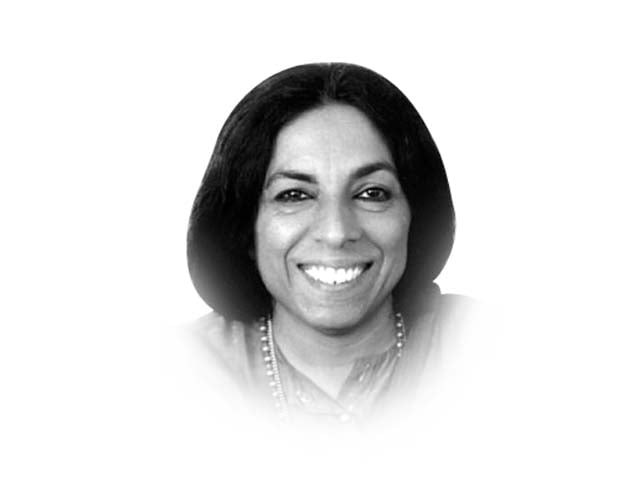One step forward, two steps back
Perhaps by the time the next International Women’s Day comes around, this will no longer be such a distant dream.

It was this news that greeted me on the morning of May 8 when I opened the newspapers. It wasn’t what I was expecting: after all, it was the hundredth anniversary of International Women’s Day, a day on which women had come together to demand better pay, workers’ rights, voting rights, education, a day that had gone on to become truly international, with women’s movements the world over using it to raise their demands, to take out marches and processions and to celebrate. I thought the media would be full of stories about women’s achievements, the distances they had travelled…
But the local papers had an altogether different story to tell. The papers were full of women, that was true, but much of the space was taken up by full- or half-page advertisements, either by government departments saying things like ‘we honour women on International Women’s Day’ or by actual advertisements for fairness creams, jewellery, health spas and so on. Alongside these were the news items: a minor raped in one area, a woman’s body found in a gunny bag in another area, a 74-year-old woman strangled to death in a third…I wanted to hang my head in shame.
It’s difficult to believe that over a hundred years have passed since that initial history of protest in the United States and in Europe. And it wasn’t only there. By the early twentieth century hundreds of thousands of Indian women had begun to come out on the streets to battle for independence from the British. Many formed organisations of their own, such as the Mahila Atmaraksha Samiti, the All India Women’s Conference, and took up first social and then political issues.
Indeed the independence of India and the birth of Pakistan would not have happened had it not been for their women — all major campaigns, whether non-cooperation or the Salt protest, of swadeshi, were led and sustained by women. But today, there’s little recognition of that. And yet, we know that change has happened, and it’s happened in important ways. But in some essential ways really nothing seems to have changed.
Take South Asia: all of our countries have enacted legislation about women — some more progressive than others, but it is there. All have put money and resources towards women’s education, their health. All have created some space — not enough but some — for women to enter politics and to deal with power. All have women who head industry, businesses, banks and so on. There is no doubt that this is progress.
And yet, scratch the surface and you’ll come across a different reality. Widespread violence that takes new forms as women begin to step out of the home into the public space, into workplaces and offices, widespread cultural and religious sanction for the oppression of women, a firmly etched belief in the minds of men, and indeed in those of some women, that women simply do not matter, that you can beat and rape them, dispense with them — as young Radhika’s murderer did — and remain immune from the consequences — as he undoubtedly will.
What is it about our societies that allows us, indeed often encourages us, to so devalue one-half of our population? We can’t put it down to tradition — traditions are never static, and they change with time. For example, we might well say traditionally, South Asian women, or more specifically Indian and Pakistani women, or one might say Hindu and Muslim women, do not go out to work. Yet, times have changed, the world has changed and women are working everywhere — and this change will create a new tradition: Of women working.
Nor can we say it is due to religion. For while all religions are patriarchal and male dominated, and all see women as secondary, none advocates violence against women, none justifies rape, acid throwing, and other forms of violence that we continually subject women to.
Nor can we put it down to low levels of development or to poverty. Studies across the world have shown that the people most sympathetic to working towards development, are women. It’s a well-known adage that you educate a woman and you educate a family: women are collective workers, they seldom focus just on themselves. And as the old Chinese leader, Mao Tse Tung said, women hold up half the sky.
The site most resistant to change, it seems to me, is that part of the human brain where beliefs, whether religious or otherwise, and values reside. These two are not inherent, but created, by education, or by our upbringing. And clearly, even today, in our homes and families, in our educational institutions, we’re taught that women are somehow inferior. So entrenched are these beliefs, that despite all evidence to the contrary — look at what women have achieved in the world today — we continue to believe it.
This is why the hundreds of thousands of women who bring up families and ensure their children get the best despite poverty, and at considerable cost to themselves, or the women who have fought to be pilots, politicians, scientists, astronauts, train and taxi drivers, have such a difficult task ahead of them. They’ve got to fight for their place in the sun and convince everyone around them that they’re capable of retaining it, of making the world a better place.
Perhaps by the time the next centenary of International Women’s Day comes around, this will no longer be such a distant dream. Instead, it will be a reality.
Published in The Express Tribune, March 13th, 2011.














COMMENTS
Comments are moderated and generally will be posted if they are on-topic and not abusive.
For more information, please see our Comments FAQ